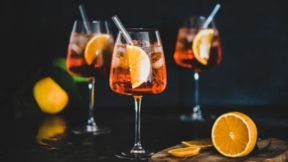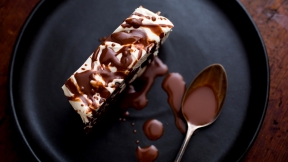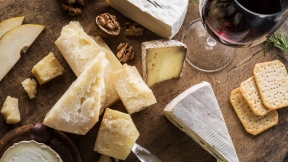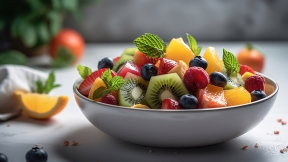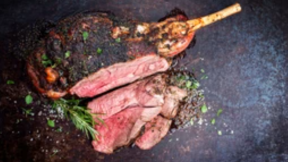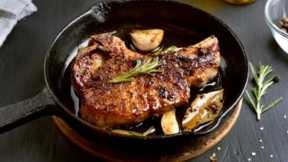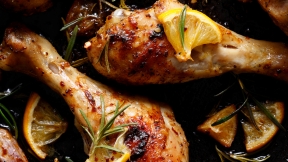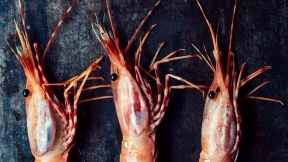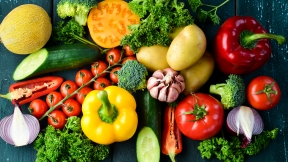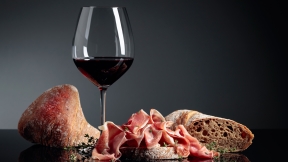Though it belongs to the New World distinction of wines, Australia’s winemaking history started a lot earlier than many expect. The first vine clippings were brought over by British settlers from South Africa in 1788, and vines from Europe were introduced to the country during the 1830s and 1840s, before the phylloxera epidemic wiped out many of Europe’s finest vineyards. As a result, Australia boasts the largest selection of old-vine material in the world, giving its wines a level of complexity and depth of flavour that is uncommon in many New World wines.
The Club’s Head of Wine, Sébastien Chevalier, recounts his first foray into Aussie wine. “I went to Australia for the first time in 2007, when the country was still in the mindset of producing big, bold Shiraz. I visited the big-name producers – Penfolds, Henschke, D’Arenberg, and Leeuwin Estate, mostly in the western part of South Australia. The style was very different from what I was used to, coming from France,” he says.
Australian wines have previously been associated with a minty taste of eucalyptus, possibly from the proliferation of eucalyptus trees in its wine growing regions. This older style was consistent and predictable, but less favoured now than it once was.
When Sébastien returned just three years later, the scene had completely changed, displaying a drastic evolution of style, of people, of thinking – especially at smaller wineries he visited like Garagiste, Mount Mary, and Syrahmi in Victoria, and Spinifex and Yangarra in South Australia.
These younger winemakers, fresh from their travels in Europe, had cultivated their own unique vision of how to make good wine, showcasing a high level of dynamism and finesse compared what he had tasted the first time around, Sébastien says. “Australian winemakers now lean towards producing wines that are not as bold, with a lot more variety that reflects the uniqueness of the terroir.”
A huge country around the same size as Europe, Australia has an abundance of prime winemaking regions and terroirs. Coonawarra in South Australia, a striking, narrow strip of land that is all red earth layered over limestone, produces elegant Cabernet Sauvignon that has intense blackcurrant notes and is packed with flavour, says Sébastien. Other popular varieties coming out of Australia these days include fruit-driven Pinot Noir from slightly warmer Tasmania; as well as quality rosés and red wines meant to be enjoyed chilled.
Sébastien also believes that wines must fit into the DNA of the region. “Like the laid-back lifestyle of its people, Aussie wines are also more about having a good time; It’s never too formal, requiring long hours to open or an overly delicate touch,” he says.
A revolutionary move by Australia is the widespread use of screw caps, something that other winemaking regions are only slowly adopting. Screw cap bottles allow the winemaker to control the exact amount of oxygen inside and eliminates the risk of cork taint. As a result, the wine stays fresh in the bottle for longer, and your poured glass is presented in the exact way the winemaker intended it to be – giving Australian wines a consistency in quality that is unmatched.
The dedication to quality control, great and diverse terroir, quality old vines, and an openness to change has made Australia’s winemaking prowess a force to be reckoned with. “Regions in Western Australia, to the north of Perth, are coming out with exciting things. Hilltops in New South Wales, Gippsland in Victoria, these are all up-and-coming places for winemaking. Wine culture is definitely on the rise in Australia, and I’m excited to see what comes next,” says Sébastien.
For a taste of stellar Australian wine, try these bottles available at The Club:
Leeuwin Estate 2019 Cabernet Sauvignon, Art Series
Mount Mary Vineyard 2008 Cabernet Blend, Quintet
Yangarra Estate 2017 Roussanne
Pewsey Vale Vineyard 2023 Riesling
Discover other inspiring sips with Wine Circle.
The Club’s Head of Wine, Sébastien Chevalier, recounts his first foray into Aussie wine. “I went to Australia for the first time in 2007, when the country was still in the mindset of producing big, bold Shiraz. I visited the big-name producers – Penfolds, Henschke, D’Arenberg, and Leeuwin Estate, mostly in the western part of South Australia. The style was very different from what I was used to, coming from France,” he says.
Australian wines have previously been associated with a minty taste of eucalyptus, possibly from the proliferation of eucalyptus trees in its wine growing regions. This older style was consistent and predictable, but less favoured now than it once was.
When Sébastien returned just three years later, the scene had completely changed, displaying a drastic evolution of style, of people, of thinking – especially at smaller wineries he visited like Garagiste, Mount Mary, and Syrahmi in Victoria, and Spinifex and Yangarra in South Australia.
These younger winemakers, fresh from their travels in Europe, had cultivated their own unique vision of how to make good wine, showcasing a high level of dynamism and finesse compared what he had tasted the first time around, Sébastien says. “Australian winemakers now lean towards producing wines that are not as bold, with a lot more variety that reflects the uniqueness of the terroir.”
A huge country around the same size as Europe, Australia has an abundance of prime winemaking regions and terroirs. Coonawarra in South Australia, a striking, narrow strip of land that is all red earth layered over limestone, produces elegant Cabernet Sauvignon that has intense blackcurrant notes and is packed with flavour, says Sébastien. Other popular varieties coming out of Australia these days include fruit-driven Pinot Noir from slightly warmer Tasmania; as well as quality rosés and red wines meant to be enjoyed chilled.
Sébastien also believes that wines must fit into the DNA of the region. “Like the laid-back lifestyle of its people, Aussie wines are also more about having a good time; It’s never too formal, requiring long hours to open or an overly delicate touch,” he says.
A revolutionary move by Australia is the widespread use of screw caps, something that other winemaking regions are only slowly adopting. Screw cap bottles allow the winemaker to control the exact amount of oxygen inside and eliminates the risk of cork taint. As a result, the wine stays fresh in the bottle for longer, and your poured glass is presented in the exact way the winemaker intended it to be – giving Australian wines a consistency in quality that is unmatched.
The dedication to quality control, great and diverse terroir, quality old vines, and an openness to change has made Australia’s winemaking prowess a force to be reckoned with. “Regions in Western Australia, to the north of Perth, are coming out with exciting things. Hilltops in New South Wales, Gippsland in Victoria, these are all up-and-coming places for winemaking. Wine culture is definitely on the rise in Australia, and I’m excited to see what comes next,” says Sébastien.
For a taste of stellar Australian wine, try these bottles available at The Club:
Leeuwin Estate 2019 Cabernet Sauvignon, Art Series
Mount Mary Vineyard 2008 Cabernet Blend, Quintet
Yangarra Estate 2017 Roussanne
Pewsey Vale Vineyard 2023 Riesling
Discover other inspiring sips with Wine Circle.









